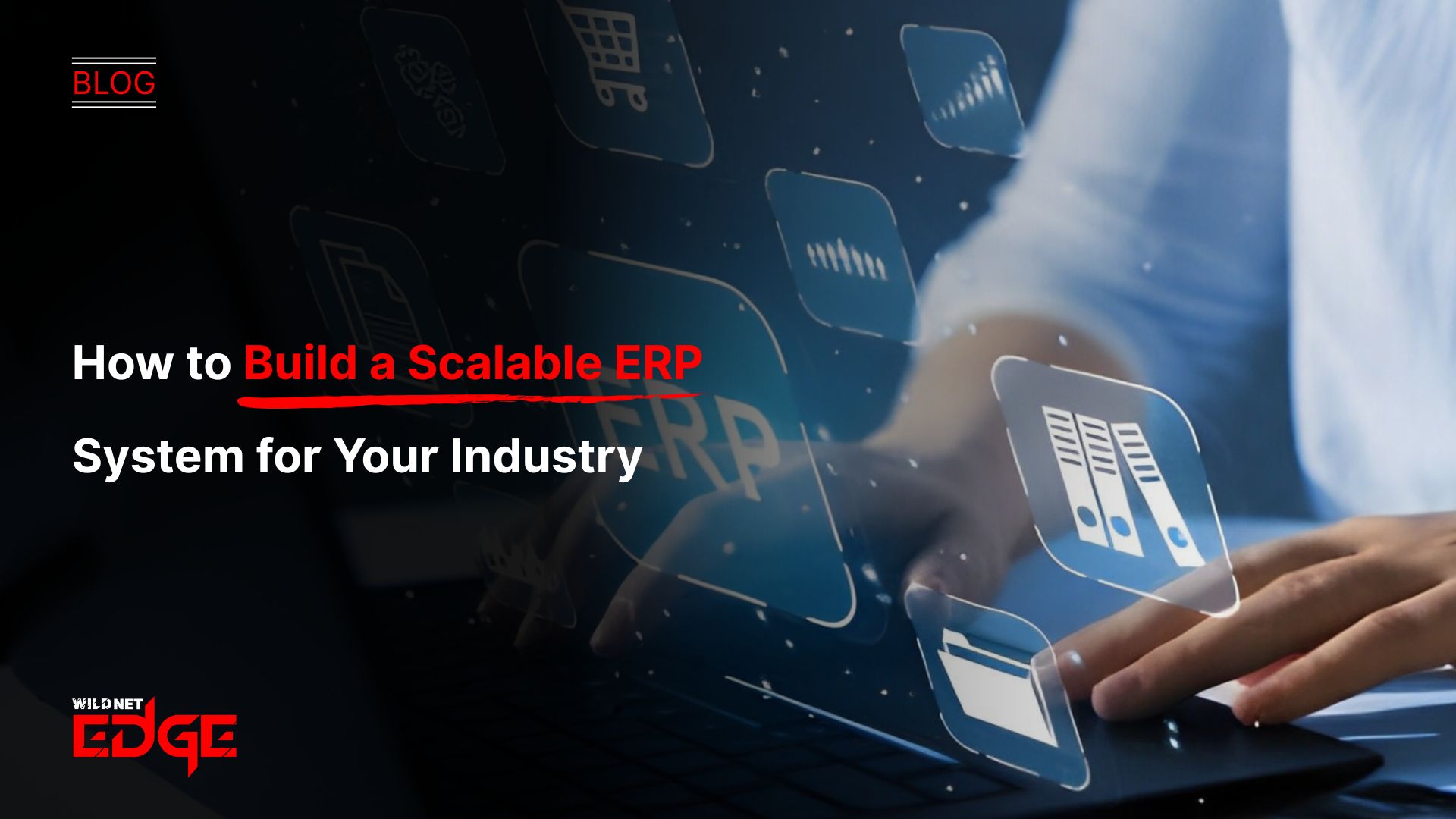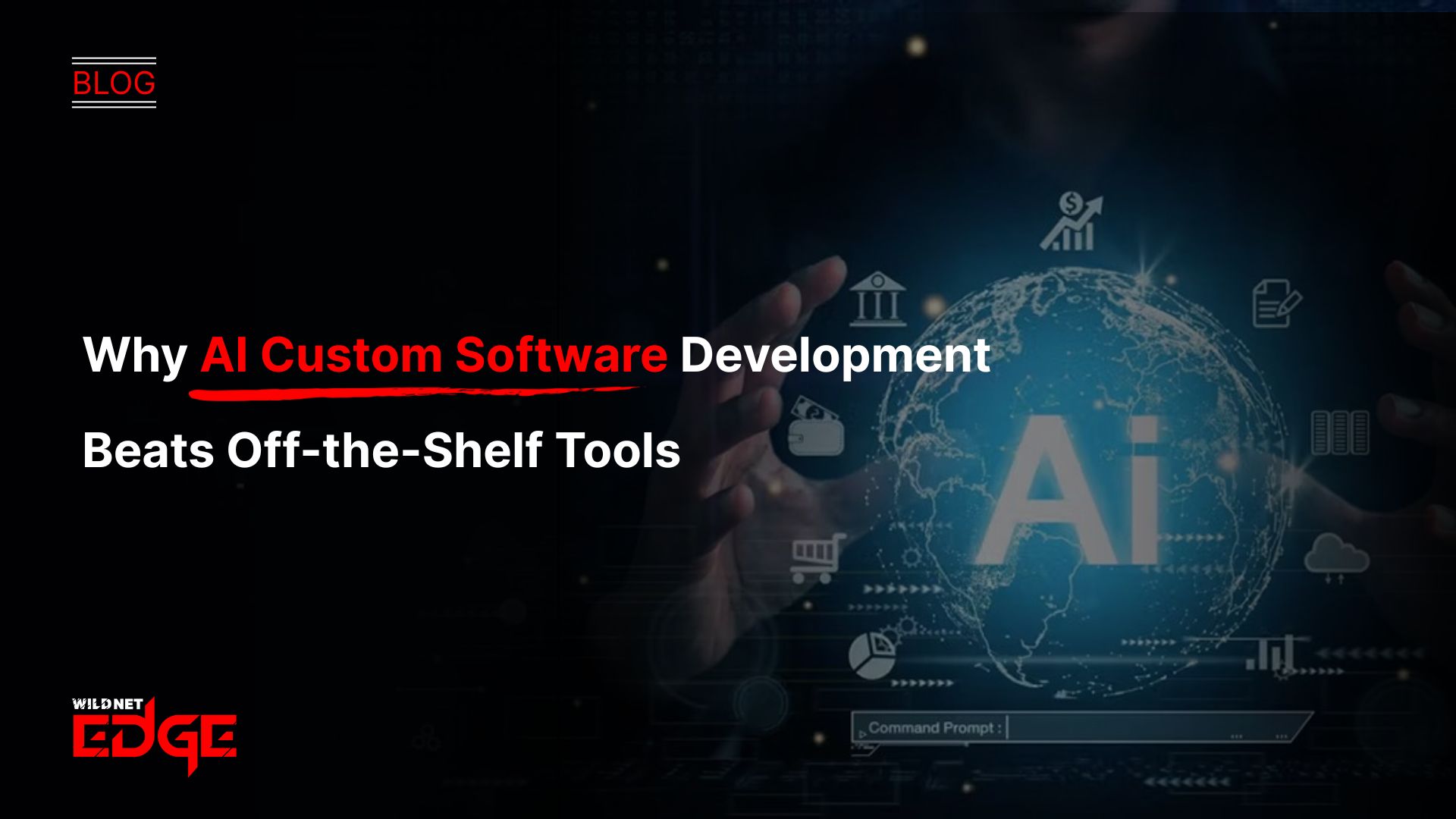TL;DR
This article outlines the strategic importance and process of building a scalable ERP system designed specifically for a particular industry’s needs. It explains that generic ERPs often fail to handle unique workflows or scale effectively, making custom, industry-specific ERP solutions a competitive necessity. The guide details core architectural principles essential for enterprise software scalability, such as microservices, appropriate database strategies, and leveraging cloud infrastructure. Key considerations include balancing customization with maintainability and planning for future growth.
Enterprise Resource Planning systems are the central nervous system of modern businesses, which integrates core processes like finance, HR, supply chain, and manufacturing. However, as your business grows and your industry evolves, an off-the-shelf ERP that once seemed perfect can quickly become a bottleneck. It might lack the specific features your industry requires or struggle to handle increasing transaction volumes. You need a scalable ERP system designed for your current needs and future growth to truly thrive.
What is a Scalable ERP System?
A scalable ERP system is an enterprise resource planning platform designed to handle significant increases in users, data volume, and transaction throughput without degradation in performance or requiring a costly, disruptive overhaul. Scalability ensures that as your business expands adding more customers, product lines, employees, or global locations your core operational software can grow seamlessly.
This often involves moving beyond monolithic architectures and leveraging modern design principles and cloud infrastructure. The goal is to create a system where capacity can be added efficiently, often automatically, to meet fluctuating demands. This focus on enterprise software scalability is paramount for long-term success.
Why Generic ERPs Often Fail at Scalability
While major ERP vendors offer scalable solutions, their generic nature often creates challenges, particularly for businesses with unique needs:
- Forced Workarounds: Trying to fit complex, industry-specific ERP requirements into a standard workflow leads to inefficient workarounds that don’t scale well.
- Customization Complexity: Heavily customizing a generic ERP can make future upgrades difficult and costly, hindering long-term scalability and maintainability.
- Performance Bottlenecks: Generic architectures may not be optimized for the specific high-volume transactions or data types common in certain industries e.g., real-time manufacturing data.
- Costly Tiers: Scaling a generic SaaS ERP often involves moving to significantly more expensive subscription tiers based on user counts or features you may not fully need.
A custom, scalable ERP system addresses these issues by being designed for your specific context from the start.
Architectural Principles for Building a Scalable ERP
Creating a truly scalable system requires careful planning and adherence to modern architectural best practices.
1. Microservices or Modular Monolith Approach
Instead of building a single, massive ERP application, consider breaking it down.
- Microservices: Decompose the ERP into small, independent services e.g., Inventory, Finance, HR. Each service can be scaled independently, offering maximum flexibility but adding complexity in management.
- Modular Monolith: A middle ground where the application is built as a single unit but internally divided into well-defined, loosely coupled modules. This can be easier to manage initially while still allowing for better organization and potential future separation than a traditional monolith.
2. Database Scalability Strategy
The database is frequently the biggest bottleneck in enterprise software scalability.
- Read Replicas: Create copies of your database to handle read-heavy workloads (like reporting) without impacting write performance.
- Sharding: Partition your database horizontally across multiple servers, allowing it to handle massive data volumes and high transaction rates.
- Appropriate Database Types: Consider using NoSQL databases for specific modules that handle large volumes of unstructured or rapidly changing data, alongside a relational database for core transactional data. Expert design is a key part of effective ERP Software Solutions.
3. Leveraging Cloud Infrastructure
Building a modern, scalable ERP system almost always involves the cloud. Cloud platforms provide the essential tools for elasticity and resilience:
- Auto-Scaling: Automatically adjust server capacity based on real-time load.
- Load Balancing: Distribute incoming requests across multiple application instances.
- Managed Services: Utilize managed databases, caching layers, and message queues that handle scaling automatically.
4. Stateless Application Design
Ensure your application servers do not store user session data locally. Store session state in a centralized cache (like Redis) or database. This allows any server instance to handle any user request, which is critical for effective horizontal scaling and load balancing.
Balancing Customization and Scalability in Industry-Specific ERP
One of the main reasons for a custom build is to accommodate unique industry requirements. However, overly complex or poorly designed customizations can hinder future scalability and make maintenance difficult. The key is strategic ERP customization:
- Focus on Core Differentiators: Customize the modules and workflows that provide a true competitive advantage or are essential for your specific industry regulations.
- Use Configuration Where Possible: Build flexibility into the system using configuration settings rather than hard-coded logic whenever feasible.
- Adhere to Architectural Principles: Ensure all customizations follow the same principles of modularity and statelessness as the core system. This often requires experienced Custom Software Development Services.
Building a Scalable ERP: Real-World Examples
Case Study 1: A Manufacturing Company’s Custom Production Module
- The Challenge: A specialized manufacturing company had unique, multi-stage production workflows that no off-the-shelf ERP could model accurately. Their existing manual tracking system was slow and error-prone.
- Our Solution: We built a custom ERP system with a highly tailored production planning and tracking module using a modular architecture. The system integrated directly with their shop-floor equipment via IoT sensors for real-time data capture.
- The Result: The company gained complete, real-time visibility into their production line. The custom module eliminated manual tracking errors, optimized scheduling, and improved throughput by 20%. The modular design ensured the system could easily scale as they added new production lines.
Case Study 2: A Retail Chain’s Scalable Inventory System
- The Challenge: A rapidly expanding retail chain’s existing ERP inventory module couldn’t handle the transaction volume from hundreds of stores and their growing eCommerce channel, leading to frequent stock inaccuracies.
- Our Solution: We designed and implemented a dedicated, scalable inventory microservice as part of their larger ERP ecosystem. We utilized database sharding and asynchronous processing to handle millions of daily inventory updates from POS systems and online orders.
- The Result: The new inventory system provided near real-time accuracy across all channels. Stockouts were significantly reduced, and the enterprise software scalability allowed the company to continue its aggressive expansion without performance degradation.
Our Technology Stack for Scalable ERP
We leverage robust, enterprise-grade technologies.
- Backend: .NET, Java, Python
- Frontend: Angular, React
- Databases: Microsoft SQL Server, PostgreSQL (with scaling extensions), Oracle, MongoDB
- Cloud Platforms: Microsoft Azure, AWS, Google Cloud
- Integration: REST APIs, Message Queues (RabbitMQ, Kafka), MuleSoft
- DevOps: Kubernetes, Terraform, Azure DevOps, Jenkins
Conclusion
Thus, a scalable ERP system is not a luxury; it’s necessary for growth and resilience today. While off-the-shelf solutions may suffice initially, businesses with unique processes or high growth ambitions often find that a custom, industry-specific ERP provides superior long-term value. By focusing on sound architectural principles and leveraging the power of the cloud, you can build a core operational platform that truly enables enterprise software scalability.
Ready to build an ERP that can keep pace with your vision? At Wildnet Edge, our AI-first approach allows us to embed intelligent forecasting and optimization capabilities directly into your ERP. We help you Automate Business Processes and build scalable, future-proof systems designed for your success.
FAQs
A scalable ERP provides long-term ROI by reducing the need for costly future replatforming projects. It ensures consistent performance, which improves user productivity and customer satisfaction.
Often, the biggest technical challenge is designing the database architecture correctly from the start. Choosing the right database types, implementing effective indexing, and planning for techniques like sharding or read replicas are crucial for handling large data volumes and high transaction loads without performance bottlenecks.
Not necessarily. While microservices offer maximum flexibility and independent scalability, they also introduce significant operational complexity. A well-designed Modular Monolith can offer good scalability for many businesses with less complexity, especially in the initial stages.
Building scalability in from the start adds some upfront complexity and cost (perhaps 10-20% more than the simplest possible design). However, trying to re-architect a non-scalable system after it’s already live and full of data is exponentially more expensive and riskier, often requiring a near-complete rewrite.
It requires disciplined development practices. Ensure customizations are built within well-defined modules or services, follow the same architectural principles (e.g., statelessness) as the core system, and include performance testing as part of the development cycle for any custom feature.
Yes, absolutely. A key part of building a custom ERP is designing robust APIs (Application Programming Interfaces) that allow for seamless integration with necessary third-party services, just like an off-the-shelf system would.
The first step is a deep-dive discovery and business process analysis phase. You need to meticulously document your current workflows, identify all specific requirements that generic ERPs fail to meet, and define clear objectives for performance and future growth.

Nitin Agarwal is a veteran in custom software development. He is fascinated by how software can turn ideas into real-world solutions. With extensive experience designing scalable and efficient systems, he focuses on creating software that delivers tangible results. Nitin enjoys exploring emerging technologies, taking on challenging projects, and mentoring teams to bring ideas to life. He believes that good software is not just about code; it’s about understanding problems and creating value for users. For him, great software combines thoughtful design, clever engineering, and a clear understanding of the problems it’s meant to solve.
 sales@wildnetedge.com
sales@wildnetedge.com +1 (212) 901 8616
+1 (212) 901 8616 +1 (437) 225-7733
+1 (437) 225-7733































